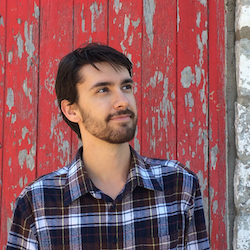Video: How to Develop Characters with Beemgee
Character Building
Character Building
When you work out what the characters do and why they do it, you are effectively working on your plot.
Find a video here.
The Beemgee character-builder asks you a series of questions about each of your main characters. Answering them will help you find their role and importance in narrative.
Always try to keep your answers as concise as possible. And above all, always remember that knowing the answers to these questions is not enough. You must show your audience what you have answered through scenes. That means there must be plot events that convey what you have answered here to your readers or viewers.
Working on Characters

Click into the CHARACTER area of Beemgee. By the way, stay in the same browser window, whether you’re working on PLOT, CHARACTER or STEP OUTLINE – having one project open in multiple windows may result in some of your input being lost.
In the CHARACTER area you’ll land in COMPARE-view, where you can add a character card for each of the major figures in your story.
Beemgee will help you outline your plot using the principle of noting ideas for scenes or plot events on index cards and arranging them in a timeline. This is a separate process from actually writing the story. Most accomplished authors outline their stories before writing them, because it saves rewrites later.
Find a video here.
In this post we will explain –
The Beemge author tool is divided into three separate areas, PLOT, CHARACTER and STEP OUTLINE. You navigate them easily in the top menu.
Important note: Make sure to stay in the same browser window in whichever area you’re working. Having one project open in multiple windows may result in some of your input being lost.
How To Create An Event Card
Profile settings and the overview of all your projects via the global menu.
The TOUR guides you through the main features and functions. You can turn it on and off any time in your profile settings.
On-site help wherever you are in the tool under | ? |.
How to set and assign recurring motifs to the plot events of your story.
Highlight and Filter Your Scene Details.
Set the structure markers in the NARRATIVE order, see them in both sort orders.
Click one of the links below.
When the project opens, feel free to drag and drop or edit whatever you want – any changes you make will not be saved. It’s the perfect way to explore Beemgee functionality. Try the FILTER function, for instance, or the NARRATIVE-CHRONOLOGY switch. Go to the CHARACTER tool, mark your favourite character and hit DEVELOP in the tool bar. Or read the STEP OUTLINE.
If you don’t have an account yet, you’ll still see all the PREMIUM features, such as STORY QUESTIONS in the STEP OUTLINE section or the detail views of PLOT events or CHARACTER sheets.
SEA BATTLES (Look closely, you might recognise this story!)
Have a look at a list of CLASSICAL CHINESE LITERATURE. Click the NARRATIVE-CHRONOLOGY switch to see the order of appearance and the order of when the stories are set.
Or disentangle the complex chronology of THE STAR WARS SAGA. Click the NARRATIVE-CHRONOLOGY switch to see the difference between the year of production and what happened when in the story.
Finally, read THE BEEMGEE STORY as a Beemgee project. Try opening the DESCRIPTIONs per event at the bottom of the sidebar, or read it as copy text in the STEP OUTLINE section.
by Vincent Teetsov

Residing at the crossroads between songwriting, picture books, and non-fiction with a cultural focus, Vincent Teetsov is a communicator with the ambitious goal of inspiring the world to innovate and live meaningfully through multimedia creations. Since 2013, he has released several music albums and books, relating to topics of history, language, and the passage of creativity through time. This has been particularly impacted by his time living across the United States, Italy, and the UK. Since 2015, he has collaborated with illustrator Laani Heinar in creating the children’s stories, comics, and songs for Pumpkin and Stretch.
You can follow Vincent’s latest activity on Instagram here: www.instagram.com/pumpkinandstretch/ and here: www.instagram.com/vincentteetsov/.
Admittedly, there is less text in a picture book than you will find in a novel. In a picture book, printing specifications typically dictate that there should be 32 pages. This even number allows for the story’s pages to be folded up neatly into a single stack, called the ‘signature’. After printing, the signature is then cut and bound together. Novels have less specific requirements.
With these differences in length, sometimes outsiders to the process of writing will assume that creating a picture book is easier. This is compounded by the fact that most picture books are written for children and use simpler language. Actually, it’s even harder to get this language right than when writing for adults. (more…)